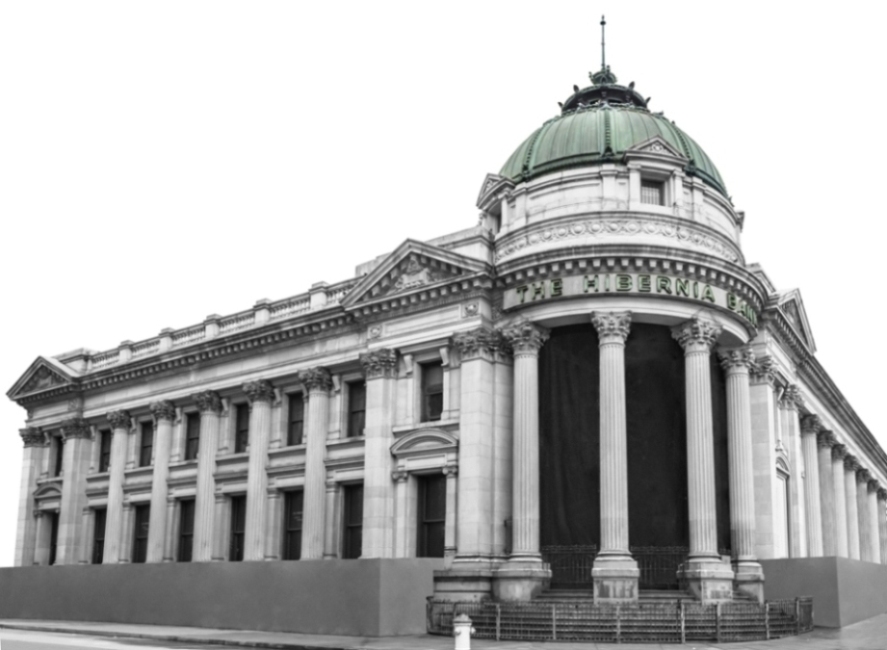Renovations and seismic upgrades have completed on The Hibernia Bank building in San Francisco, a national historical landmark and one of the city’s most recognized architectural icons.
Work on the project was led by seismic engineers WJE of Northbrook, IL, and Landmark Construction Inc., which served as general contractor. Dolmen Property Group, a San Francisco-based real estate developer, purchased the structure in 2008 and funded the multi-million dollar total seismic overhaul and preservation of the historic attributes of the previously dilapidated unreinforced masonry structure.
Seamus Naughten of Dolmen Property Group said in a recent press release that because The Hibernia Bank required a full seismic retrofit to avoid damage to the ornate plaster interior and exterior granite, the construction team utilized a unique engineering procedure involving the surgical core drilling of the walls – vertically, from the roof to the foundation – leaving the building interior and exterior virtually untouched. “The end result is a preserved Albert Pissis masterpiece, waiting on an office, retail or event space tenant to complete our adaptive re-use journey,” he said
Built in 1892, The Hibernia Bank building was designed by innovative architect Albert Pissis and is known for its Neoclassical Revival-style architecture, with its grand corner entrance, giant exterior colonnade and famed domed entryway. The edifice was one of the few buildings in the area to survive the 1906 Earthquake and Fire, owing to its “fireproof” granite construction, although the interior did suffer significant fire damage.
Situated at the intersection of Jones, McAllister and Market Streets, The Hibernia Bank building was abandoned in 1985 and remained vacant until the San Francisco Police Department occupied its basement from 1991-2000. Since then it fell into disrepair until acquired by Dolmen Property Group.
Much of the building's interior space is a vast banking hall with highly detailed and painted plaster and stone finishes throughout. The primary building structure is constructed of massive unreinforced granite and brick masonry walls with its roof supported by steel trusses. The roof diaphragm is perforated by huge skylights.
Because of its age and tumultuous past, the building had no structural or architectural drawings available for WJE to conduct preliminary seismic studies. To overcome this challenge, the company conducted detailed on-site studies to develop an understanding of the details of the building's construction and conducted structural analyses to identify its highest risk seismic vulnerabilities.
The WJE solution involved a strengthening scheme that surgically addressed the vulnerabilities and leveraged the inherent seismic resistance of the original structure, says the WJE website. "The scheme is highly-sensitive to historic significance and leaves its character-defining exterior and interior finishes virtually undisturbed," it reads. The design methodology for the seismic strengthening was developed to comply with the requirements of the city of San Francisco UMB Ordinance and uses the applicable provisions of the 2010 California Historical Building Code (CHBC) and the 2010 California Existing Buildings Code (CEBC).
Today The Hibernia Bank is listed as San Francisco Historic Landmark #130 and occupies 40,600 sq-ft in the middle of the Mid-Market tech hub that is home to tech leaders including Twitter, Uber, and Square. The property can accommodate office, retail, event, restaurant or other creative space over three floors, plus mezzanine and penthouse areas.


Post a comment to this article
Report Abusive Comment